Nvidia's DLSS Second Take: Metro Exodus Investigation - lucktope2001
IT's time for our final examination feel into Subway Exodus, exploring the last remaining key technology the game includes: Nvidia's Deep Learning Super Sampling, surgery DLSS, which is exclusive to their GeForce RTX graphics cards. We've been covering both ray trace and DLSS closely, testing where it makes sense (or rather, where IT's available) and following up arsenic patches and improvements are released to the public. As peerless of the key features on Nvidia's flagship RTX artwork card, the discussion is not only relevant but necessary.
We didn't explore Metro's DLSS at set in motion because the game's developers weren't happy with the implementation, they anticipated were going to patch it, and faithful their word that update arrived only years after the initial release with drastically better DLSS quality.
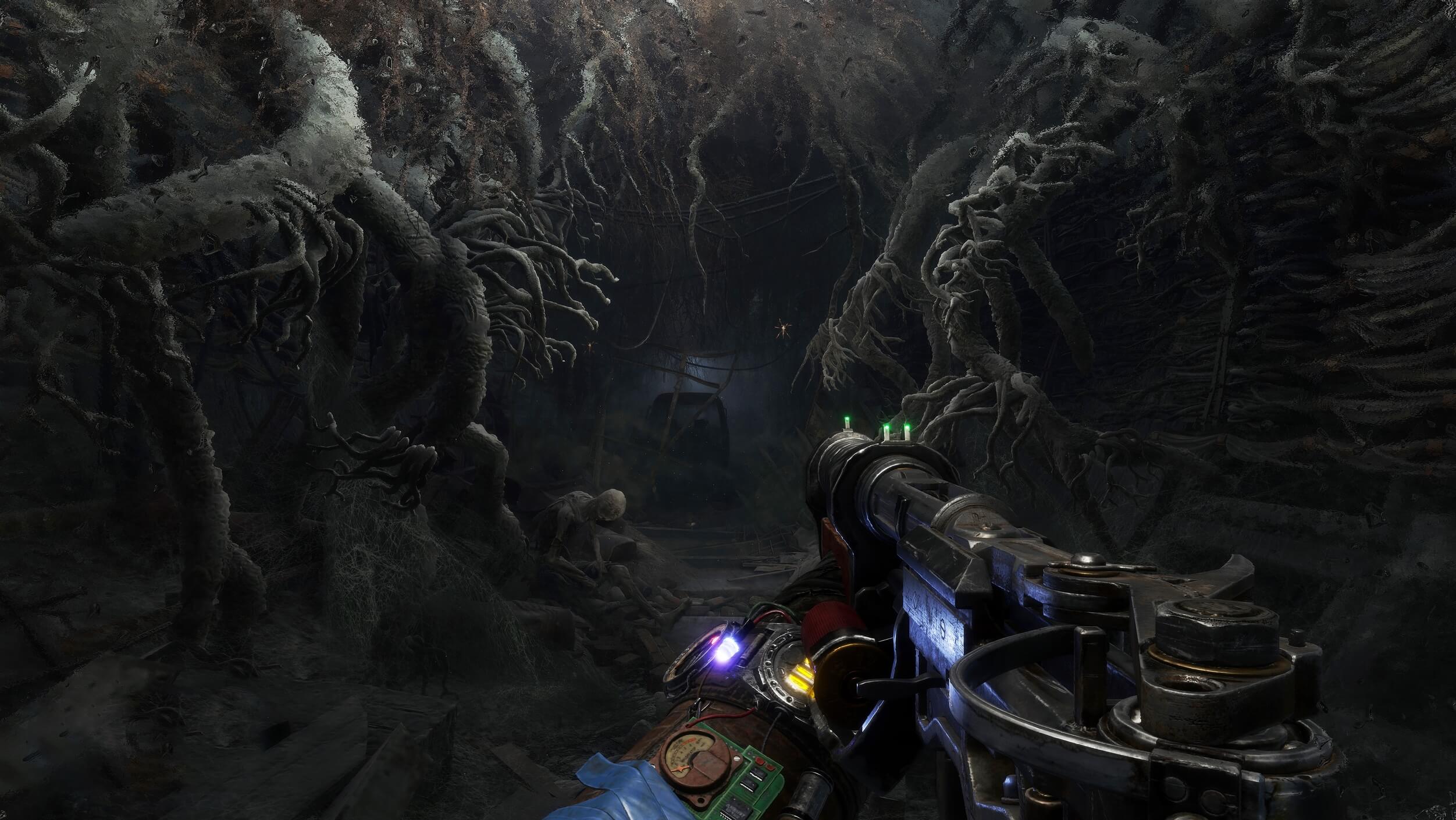
We've discussed DLSS a few times ahead, with our initiative investigation promulgated way bet on in September based on the demos Nvidia had provided at the time. We concluded and so that DLSS looked like an upscaled 1800p image, while providing around the same performance. A few weeks ago we returned to search at DLSS in Battlefield V, which was a terrible implementation that looked noticeably worsened than an upscaled 1685p image, making DLSS a fail in this game.
Now we're returning to look at DLSS in Metro Book of Exodus, and we've gotta say, our expectations are pretty low after sighted it in Battlefield V. Hopefully the technology kit and boodle better in a different spunky, and we'll search the character differences momently.

Care with Field of battle V, DLSS in Metro Exodus is bolted down depending on the GPU you experience, the resolution you're playing at, and the quality settings. At 4K can use DLSS with either shaft tracing on or dispatch with the RTX 2070 and above, but this is the only resolution where you commode use DLSS without ray tracing. At 1440p, you'll need to throw ray trace on to access DLSS, although it kit and boodle with all RTX GPUs at this resolution. And so at 1080p, it has to be with ray tracing, but only the RTX 2060 and RTX 2070 are supported.
With these restrictions in home, you can't use DLSS to boost performance up into high frame rates, for example a 2080 Ti possessor stern't encouragement their 100+ FPS gameplay at 1440p up to 140 FPS with DLSS. Instead, it's more for boosting 60 FPS gameplay operating theater below, up to the 60 to 80 FPS range in most cases.
As was common, we're benchmarking using our Effect i9-9900K test set up with 16GB of RAM and for this hardened of testing, just the GeForce RTX 2080 Ti with all other settings set to Ultra, and Hairworks disabled for improved 1% low performance. We've tested in two configurations: 4K with ray trace disabled, and 1440p with ray-tracing enabled.
Testing with the RTX 2080 Ti at 4K
Starting with the execution comparisons, DLSS in Metro Exodus is a emotional different to Battlefield V. With Battlefield V, DLSS performance was around the same mark as rendering the game at 1685p, but with Metro Exodus, DLSS is much at the level of 1800p rendering. Put differently, the performance uplift in Metro Exodus isn't as super as the performance uplift in Field V, so the eq resoluteness scaling option sees the game rendering at a higher resolution.
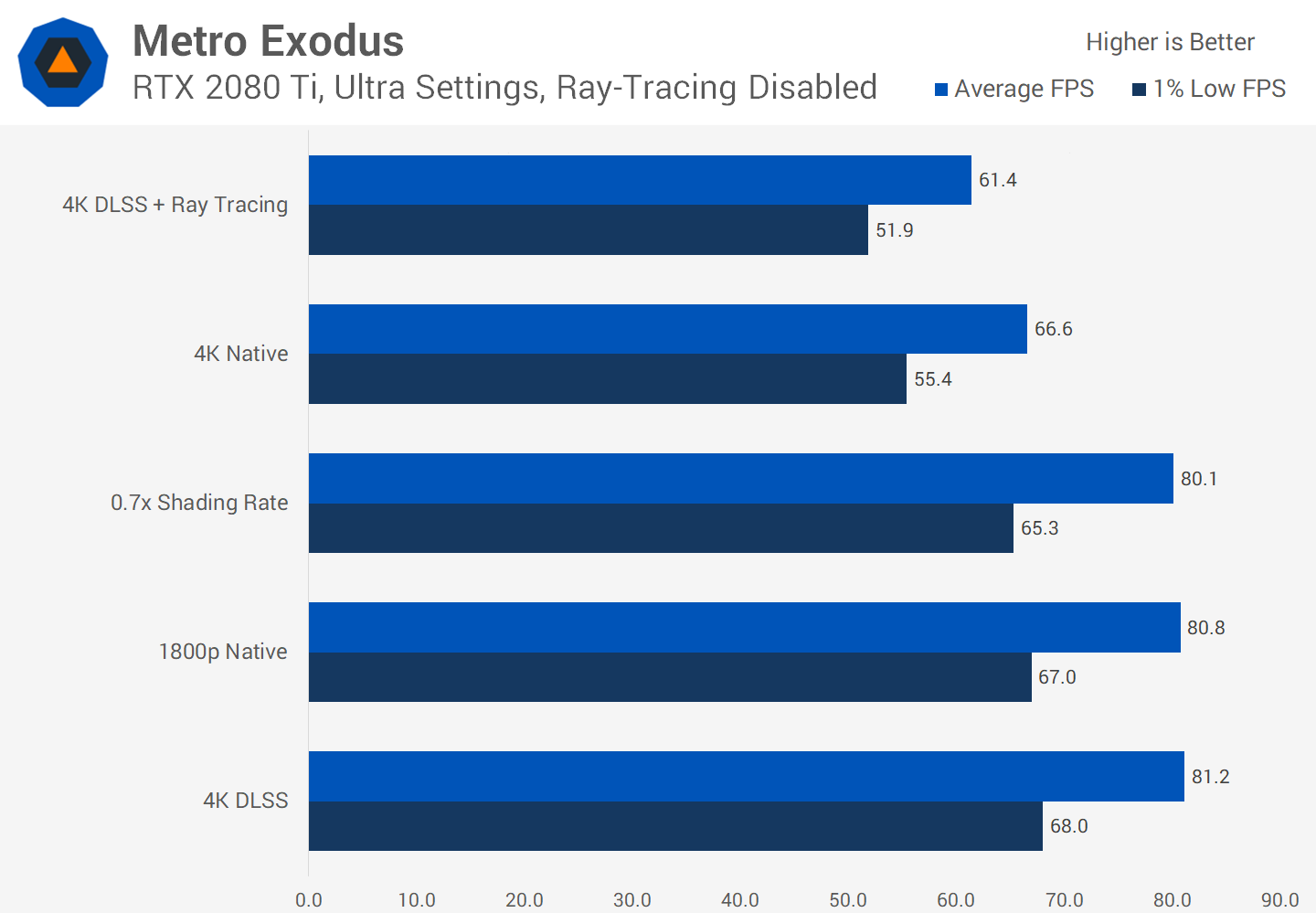
Spell our 1800p data here is from a custom 1800p resolution, Metro Exodus also includes a blending rate selection. The closest to 1800p in both execution and visuals is a 0.7x shading value. From what we've experienced, the 0.7x blending rate option performs a little worse than proper 1800p, patc also looking somewhat worsened. All three downsampling options provide around a 21% performance improvement over native rendering.
Generally, with a 2080 Cordyline terminalis the gimpy is open of flying at a little above 60 FPS without ray tracing enabled. Using DLSS surgery resolution scaling bumps that up to around 80 FPS, soh a handy uptick. However, using a combination of ray tracing and DLSS with this GPU doesn't bring you aft heavenward to the level of native rendering without DLSS. If you find the ray copied global illumination effect too subtle, it's probably best to disable it and sporty show the bet on natively.

Obviously the quality comparison is the key here. The immediately better news is DLSS in Tube Exodus is nowhere near as bad as in Battlefield V. The implementation in Battlefield was blurry and looked equivalent rubbish; it was uttermost worsened than even downsampling the game. But with Metro Exodus, leastways with the latest plot, DLSS is much clearer congener to Battlefield V.

DLSS is still not as effective as native 4K in Subway Hegira, we don't think anyone except for Nvidia's marketing team thought this would be the case and it's not in any of the demos we've seen.
4K is card shark and healthier preserves texture point, we wouldn't say it's massively superior to DLSS like it was in Battlefield, but it's enough of an promote that it remains the 'agiotage' way to play Tube Exodus, although naturally you aim an associated public presentation hit.
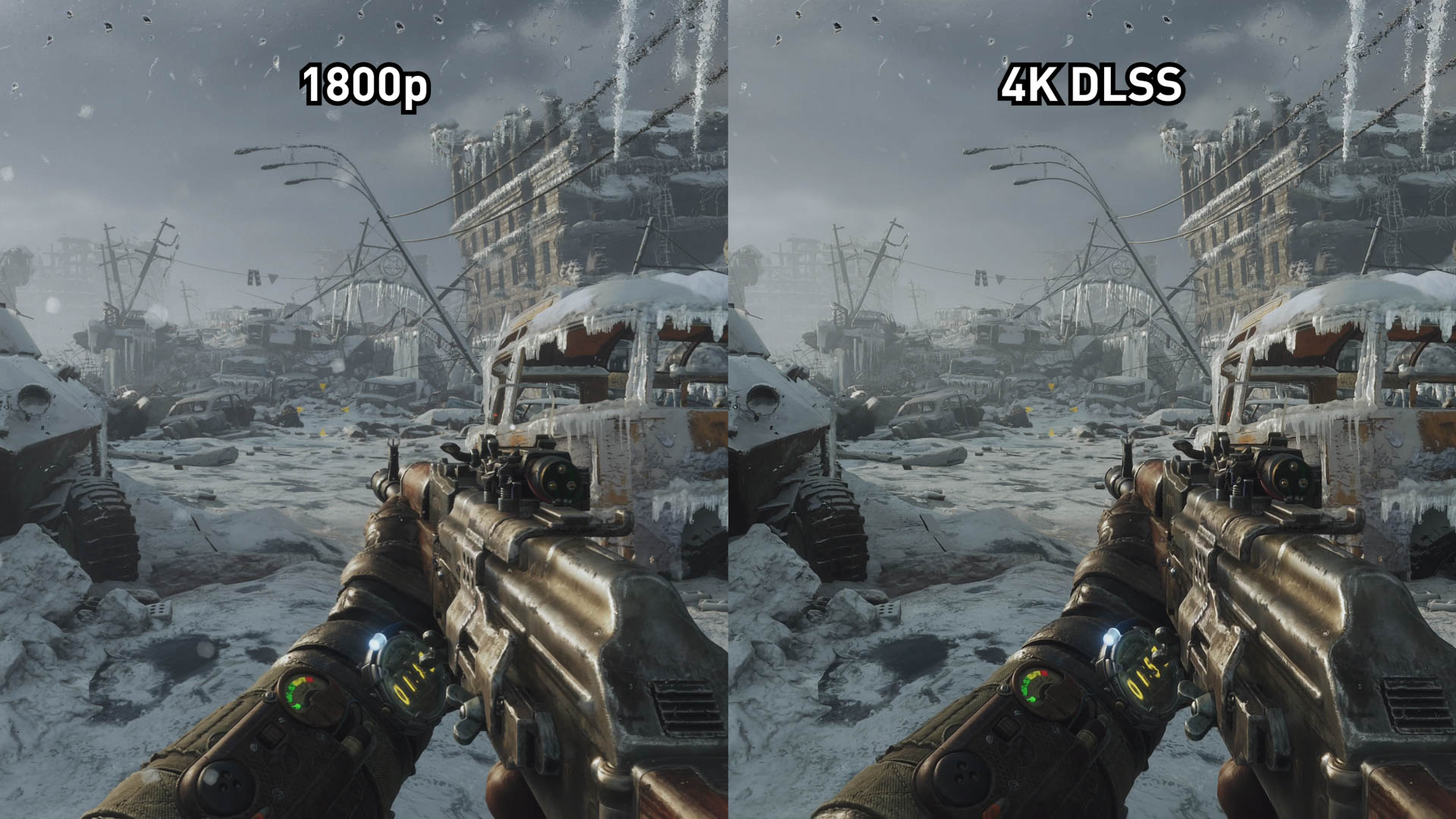
The big interview is how DLSS compares to upscaling from 1800p, which as we showed performs around the Saami. Again, with Battlefield V this was a universal joint win for resolution upscaling o'er DLSS.
With Metro Hejira, it's not a unblemished bring down pull ahead for either technique. In fact, crossways most scenes we captured, the two options look exceedingly similar. Some aren't quite as saintlike as inborn rendering. Both ingest some loss of pungency and detail. Both are somewhat softer than endemic 4K.

There are few areas where DLSS is sharper and presents a boss image. Nearly of the time it's for still elements, wish the watch on your character's wrist and the main menu. These areas don't change much conditional where you are standing, and that's where DLSS has an advantage.
Trees are also rendered, perhaps 'differently' is the best way to put it. At that place's less texture detail in the branches, but the branches are also more pronounced and clearer. We'Re sure some people will favor this presentment.

And then at that place are some areas where DLSS is not as good. Upscaled 1800p does have better fine texture detail in some areas, which more tight represents the actual textures being used. DLSS with its post processing techniques to improve sharpness can create a Weird smeared look on on some textures, you might non notice if we didn't whizz along in but it's an artefact we spotted.
DLSS is too more prone to shimmering, aliasing and unusual weird artifacts, again contingent the scene. These are issues that don't pop in static screenshot comparisons, it's only when playing the stake and moving around give notice you spot these issues. Sometimes it's distracting, sometimes you won't notice unless someone points it out.

After closely examining a good deal of DLSS footage we're getting the effect that a military post-process sharpening and stochasticity reduction filter is beingness used. We don't take in any insights into the ontogenesis march for Metro Exodus only we suspect the late patch that 'fixed' DLSS has merely implemented a sharpening filtrate to remove the blur that infested the early version. You can spot some haloing around objects which is an artefact sharpening can introduce, while increased shimmering and texture smearing are besides typical byproducts of put up processing techniques same sharpening and resound reduction.
That's non to say post processing isn't a valid technique, if it improves image quality, no one is leaving to complain and typical C. W. Post processing personal effects come at very little carrying out cost. However if a filter has improved the quality of DLSS, rather than further training of the deep learning system, this would suggest there power only be limited scope for farther improvements to image caliber, rather than potentially massive improvements like some people are suggesting is contingent. We'll undergo to see how it plays outgoing over time.

One country we were interested in, was to see whether a sharpening filter would also improve our upscaled 1800p effigy. Upscaling presently does not use whatsoever post-processing like this as far as we can tell, so theoretically a developer could use a sharpening filter plus upscaling as an alternative to DLSS.
Victimisation a very mild sharpening dribble in conjunction with 1800p translation just helped to increase apparent point slightly and remove some of the 'blur' associated with downsampling. This is a common proficiency that PC gamers already use, ReShade is already quite popular and its sharpening filters are often used to combat the fuzz of opposing-aliasing in games with stony-broke AA. So it's non surprising to see post-process sharpening functioning well with 1800p rendering, delivering at least in our opinion, a universally better icon than DLSS with better apparent levels of detail and fewer artefacts.
Examination at 1440p
Moving on to 1440p, at this resolution we are constrained to enable ray tracing to use DLSS. 1440p with ray of light tracing performs better than 4K native rendering without ray tracing, but the difference ISN't significant. Here we are once again seeing DLSS provide about a 21% performance uplift at 1440p, however this is Sir Thomas More eligible with a 0.8x blending rate, rather than 0.7x comparable with 4K gaming. That's roughly like to a 1290p resolution.
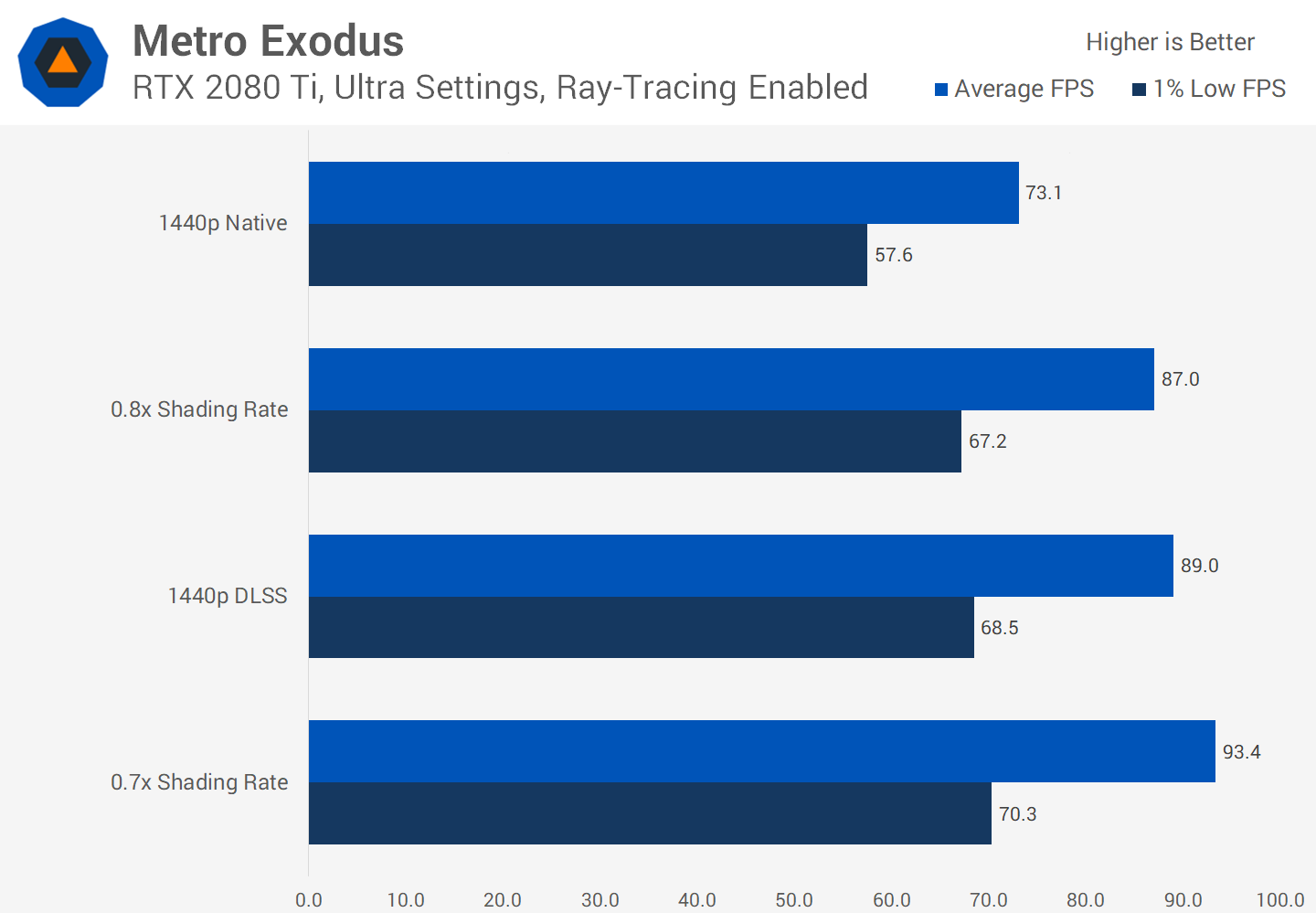
At 1440p we feel the differences between DLSS and a 0.8x shading rate are even off more marked than they were at 4K, but peradventur non in the way you expect. The areas where DLSS is superior to downsampling becomes steady Thomas More apparent at a lower resolution: trees are smoother, and the image is noticeably sharper in some areas.

Withal the issues are also accentuated: shimmering and aliasing is more noticeable, nonnegative we began to spot weird blocky artifacts on few textures using 1440p DLSS that we didn't spot at 4K. The even lower sampling pace procurable to DLSS at 4K understandably has whatever disadvantages for reconstruction and randomness reduction.

We think out DLSS looks better at 1440p overall compared to 4K, but there's still no clear winner in terms of downsampling techniques. Each option has its strengths and weaknesses, while native rendering is still overall superior.

Bottom Line
So when we begun investigating DLSS we wanted to answer two questions: does this engineering science work and put to work as advertised, and is the technology necessary? With Battlefield V, the resolution to both questions was undeniably zero: the feature blurred image quality, so it didn't work first-rate, which made it ultimately excess compared to downscaling techniques.
With Metro Exodus, IT's a different story and we want to gap descending what we think about each of these questions. We'll start with whether DLSS works. In this game specifically we think it's fair to say DLSS does work. It's a one penetrate button, information technology improves performance, and the hit to visual quality is minor. Many people won't notice some of the issues we've been mentioning, and while the image quality International Relations and Security Network't as salutary as native rendering, we think a great deal of people will beryllium more contented playing the game with DLSS enabled at a higher level of performance, than running with slightly better sharpness at get down operation.
However because it doesn't fork over equivalent or ameliorate quality than native rendering, we don't think DLSS works as Nvidia initially advertised it. Many of Nvidia's initial documents compared DLSS directly to endemic rendering, exhibit that DLSS provided higher visual quality, we're not sure how many another people bought into this but certainly that hasn't materialized. Information technology would sustain been sorcery to have a feature that both looked better than native rendering, and ran quicker, but now we jazz that isn't doable at the least in the games and demos we've seen so far.
The restricted nature of DLSS is also something that wasn't advertised and has foiled a portion of multitude hoping to use the feature to enhance performance for their specific setup. 1440p play with an RTX-class GPU is quite common, but at this resolution you'll need to enable ray tracing to also use DLSS. Considering carrying out with irradiatio tracing disabled is better than RTX + DLSS performance, we call back for some gamers choosing to forgo RTX entirely in this game will be a ameliorate choice.

Arguably the more important question is whether DLSS is necessity at all. Even if it kit and caboodle, if there's a better technique that achieves the same end goal, then it doesn't add up for plot developers to apply DLSS. And if it doesn't construct sense for game devs, it doesn't draw sense for Nvidia to work on the feature, Beaver State use it as a selling point for their GPUs.
From what we've seen, we don't think DLSS is doing anything that another subsampling technique can't achieve.
In Battlefield V whatsoever basic upscaling was leading, though that's not the case with Metro Hejira. 1800p in this game trades blows with 4K DLSS at the same level of performance. Just 1800p with a subtle sharpening filter – similar to what it DLSS appears to already be doing to meliorate figure of speech quality – is universally better than DLSS across the areas we've tested in Metro.
So this begs the interrogative... why implement DLSS at all, when a developer could clean use a combination of upscaling and post processing to achieve at the worst the same results, or at the best superior image quality?
Information technology doesn't make very much of sense for developers to prefer the much restricting DLSS choice, over something that works with all GPUs including Nvidia's Pascal card game and AMD cards, and the least bit resolutions and quality settings. Information technology wouldn't flatbottomed need to be complicated to use up, it could be integrated equally a unity-click button like DLSS.
It's semitransparent that some developers are already experimenting with techniques tantamount to DLSS. Even Metro Exodus already includes a scaling slider, as brawl many other games, which avowedly many PC gamers don't hold use of. And this is without going into a discussion on even better upscaling techniques look-alike dynamical result scaling, which we've seen used recently in Peak Legends with great results, or checker board interpreting which has improved in leaps and bounds for solace games and with boost nuance could the overall unexcelled option for PC gamers as well.
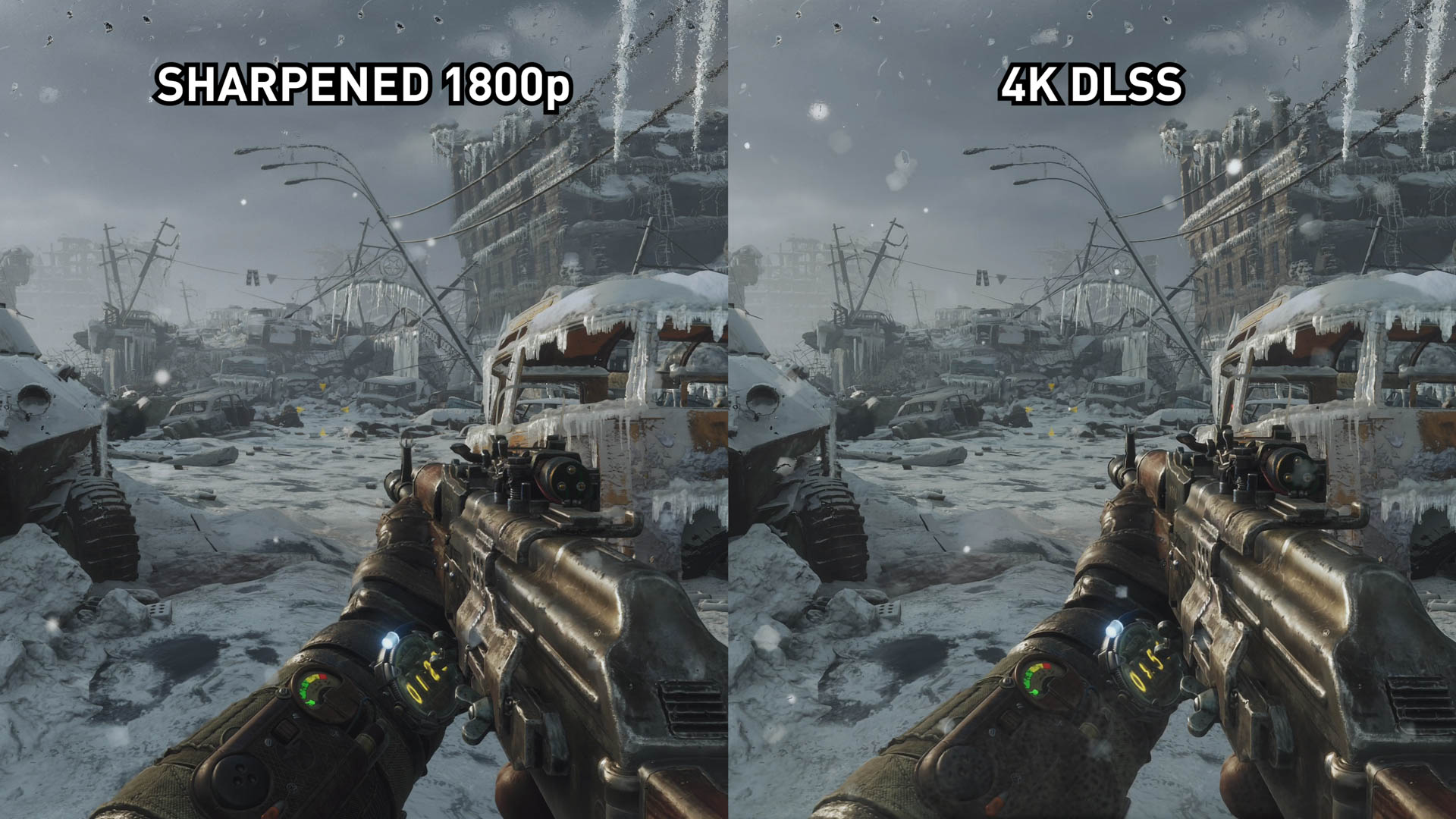
We're not saying DLSS can't improve complete fourth dimension. With faster hardware, more education and more nicety it could ameliorate. But thus arse the multitude of opposite options aiming to achieve the same results.
DLSS ISN't specialised, it's just one of many subsampling and reconstruction techniques vying for attention. This single has just garnered more attending than accustomed because Nvidia utilized it as a key selling point for their RTX art cards, when in reality it's not worthy buying a Turing GPU for it. You should buy in GPUs based on their whole performance and value package, not niche and ultimately unremarkable upscaling features.
As for Subway Exodus itself, this is the best implementation of DLSS we've seen and it's a feature GeForce RTX owners will beryllium happy with. Even if the developers had to resort to post processing personal effects to better image quality, the results are quite respectable and much in personal line of credit with what we were expecting from DLSS in real cosmos games. But if you have a Pascal GPU, a Maxwell GPU or something from AMD, we wouldn't incommode feeling like you'Re missing out, because while it's good, again it isn't anything special.
Shopping Shortcuts:
- GeForce GTX 1660 Cordyline terminalis on Amazon, Newegg
- GeForce RTX 2060 on Virago, Newegg
- GeForce RTX 2080 on Amazon, Newegg
- GeForce RTX 2080 Ti along Virago, Newegg
- Radeon RX Vega 56 on Amazon, Newegg
- Radeon RX Vega 64 on Amazon, Newegg
- Radeon RX 570 on Amazon, Newegg
- Radeon RX 580 on Amazon, Newegg
Source: https://www.techspot.com/article/1801-nvidia-dlss-metro-exodus/
Posted by: lucktope2001.blogspot.com


0 Response to "Nvidia's DLSS Second Take: Metro Exodus Investigation - lucktope2001"
Post a Comment